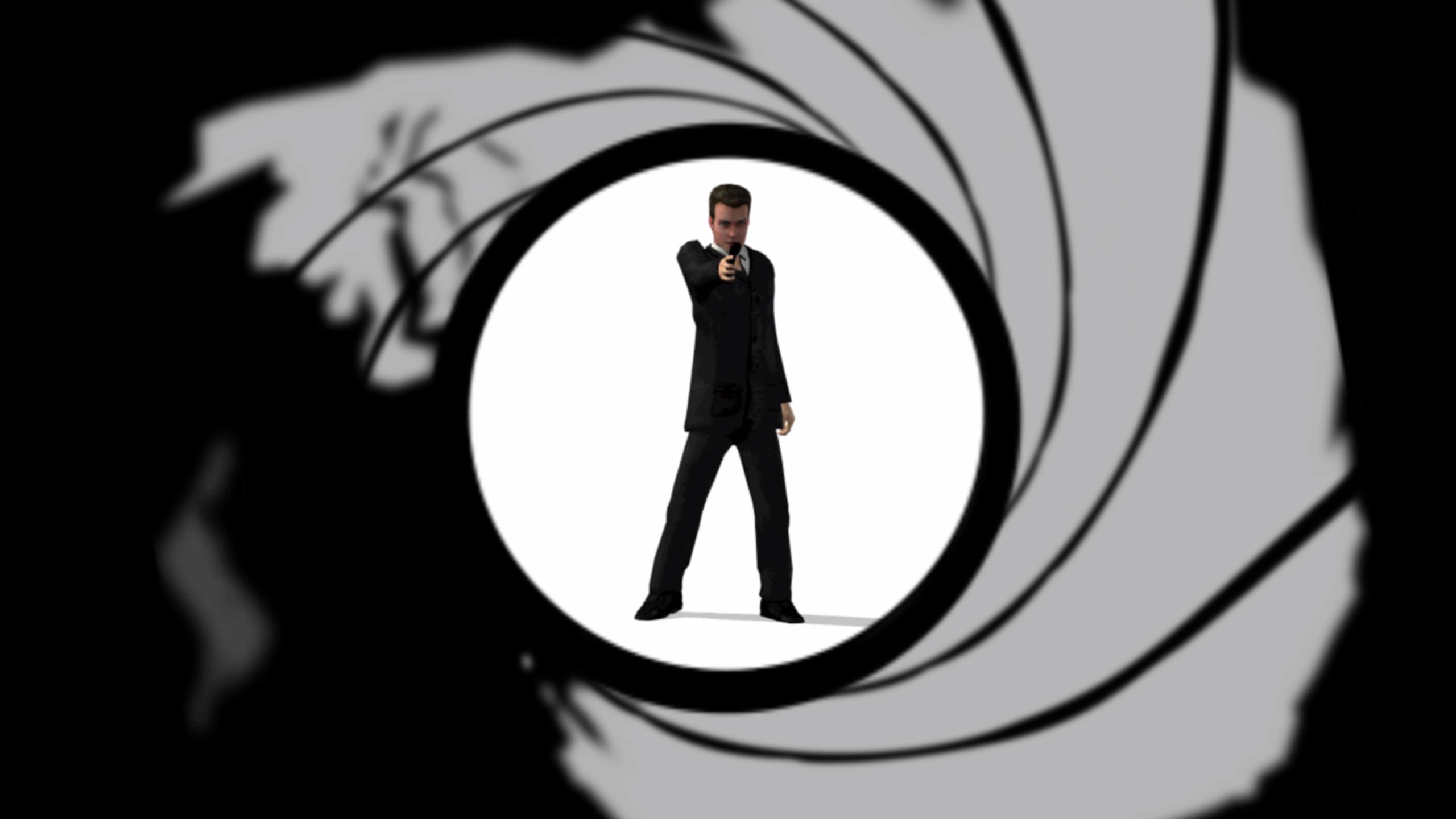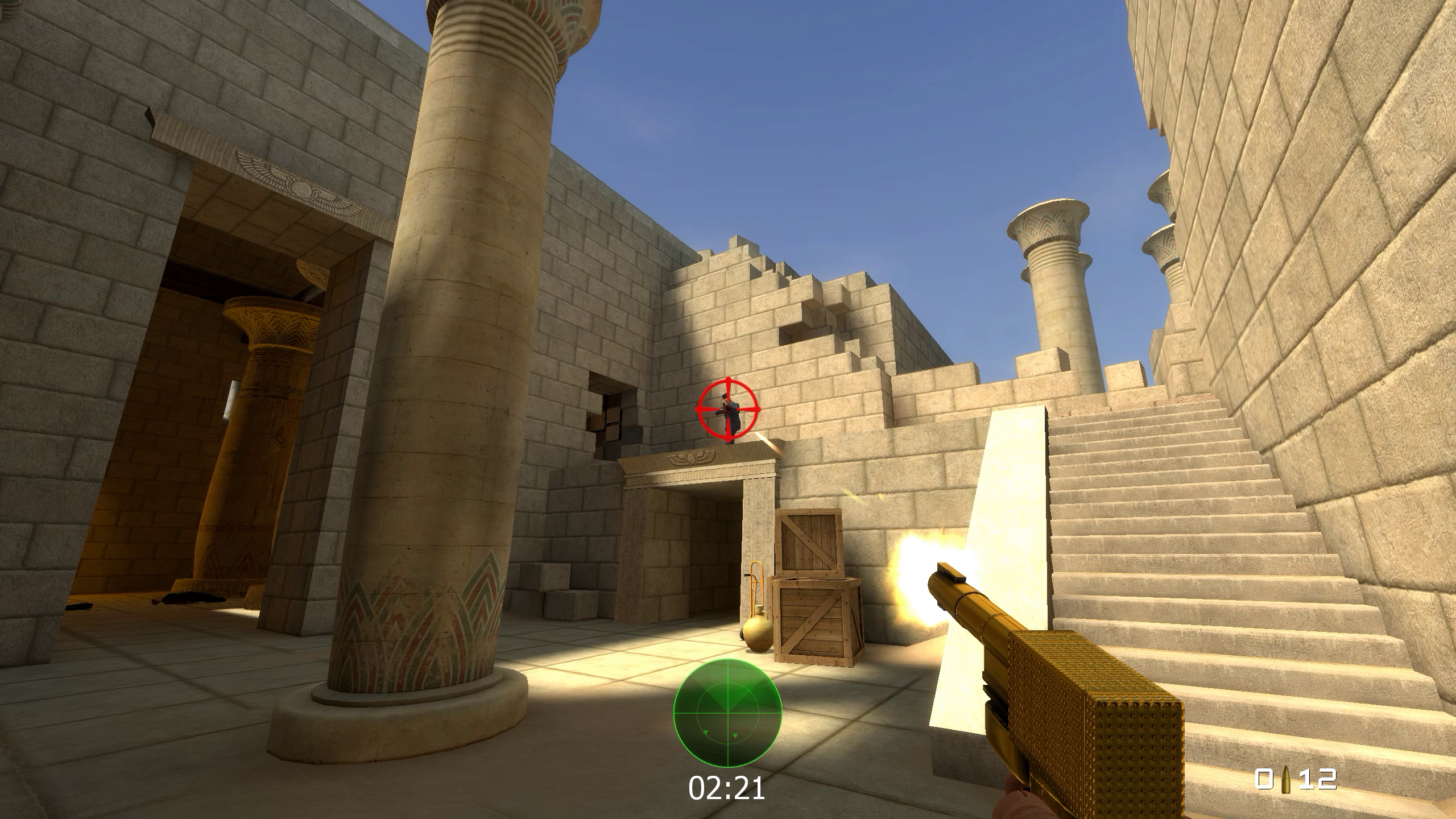GoldenEye: Source review
Mod, James Mod.

GoldenEye is an awful game to adapt. Almost everyone loves it, but almost none of the Nintendo 64 classic is worth saving: its four-player capacity, its radar system, its smeared textures, its love of closed doors that open slowly, or its awful control scheme. How do you remake something that was flawed, formative for millions of people, and that’s had two decades to ferment and idealize in people’s minds?
Team GoldenEye: Source has spent more than a decade itself trying to answer that question. And over that time, their work has become a model for how to adapt a beloved game. GoldenEye: Source reproduces nearly every map, mode, weapon, and character from the original, but ultimately it’s a successful remake because it doesn’t just blindly borrow stuff from its source material.

It’s pretty transformative, actually. GoldenEye wasn’t meant to be played with 16, 24, or even 32 players, yet on the right map and mode GE:S is laugh-out-loud insane with that many people running around.
Other than that, GE:S’ movement and aiming system is probably its biggest divergence, and it’s one of my favorite things about the game. When you crouch in GE:S, you accelerate a little in the direction you’re moving. This nuance makes crouch-dodging (and using crouch to slide around corners) really effective. It feels great when you’re in a circle-strafe duel with someone, spitting RC-P90 bullets at one another, and you pick the right moment to crouch-slide under their spray to break the stalemate.
Look at the way that the first and second enemy I fight miss over my shoulder when I crouch-dodge:
This slippery movement technique feels totally at home in a light-hearted arena shooter. And a new change introduced in GE:S’ most recent update makes players run 40 percent faster while moving diagonally, a nod to the original game that further stimulates these fun, circling duels.
In another clever interpretation of the original game, GE:S doesn’t give you a crosshair unless you press the right mouse button (or shift), which brings up an oversized red reticle. Aiming in this way feels weird at first, as if James Bond had a very small turret attached to him, but in practice it means that you have to make a constant choice between accuracy and speed because you move more slowly when you’re aiming.
Keep up to date with the most important stories and the best deals, as picked by the PC Gamer team.
Love the way that @goldeneyesource makes accuracy a movement speed trade-off. Hipshots feel lucky and surprising. pic.twitter.com/2uI4e4vrVTAugust 22, 2016
Strafing, not stirred
These are some relatively big adjustments to the way that GoldenEye plays, but GE:S still manages to recapture the calamity of the Nintendo 64 couch FPS. Firefights are chaotic and desperate, mostly because no one has a permanent crosshair on their screen, and because GoldenEye’s guns are meant to be sprayed. I loved this side-stepping dance I had with a bot around a desk, trying to lob throwing knives at him while he stared me down with a slow-firing Cougar Magnum. I laughed as Tom, James, and I filled a room with remote mines, then stared each other down in a game of chicken, daring the other to wade into the bombs. These moments of physical comedy are an asset to GE:S, helped by Source’s ragdoll.
GE:S’ most recent update added new maps Depot and Dam and rebuilt several others. The 18-map roster (not including ‘classic’ versions of some maps) feels rounder now, for sure. Aztec is a wonderfully weird mix of aesthetics—ancient stone columns, a space shuttle, a glossy control room. Recreations of classics like Stack and Facility remain pixel-perfect but barren in 2016.

Other areas of GE:S show the project’s age. Though they’re a tribute to the original, the reload animations couldn’t be simpler, and they’re identical for every weapon. Likewise, each character runs around in the same, hunched-forward pose. It’s strange to see Bond, Jaws, and Oddjob adopt the same rigid posture, and it deprives GE:S of some personality. And GoldenEye’s simplest maps, like Library, are only redeeming for their nostalgia value, for the novelty of laughing with your friends “Remember this?” for 15 minutes. The other low point are GE:S’ AI bots, which are serviceable but dull, and exhibit weird behaviors like standing still now and then.
The GoldenEye: Source soundtrack does a ton of work to revitalize the old. Bombastic remixes of themes from the game’s original composers and electronic takes on the iconic Bond melody are here, an insane 79 tracks in total from five artists that you can and should download. Some original modes also help breathe some new life, especially Arsenal, GE:S’ gun game equivalent, where players race through one of the many different weapon sets.
GoldenEye: Source succeeds because it’s reverent, not purely referential. It will happily hand you a Golden Gun and indulge your nostalgia, but the design of its movement and aiming give the game its own feel and personality that’s playful and separate from either GoldenEye or its Source DNA.

Evan's a hardcore FPS enthusiast who joined PC Gamer in 2008. After an era spent publishing reviews, news, and cover features, he now oversees editorial operations for PC Gamer worldwide, including setting policy, training, and editing stories written by the wider team. His most-played FPSes are CS:GO, Team Fortress 2, Team Fortress Classic, Rainbow Six Siege, and Arma 2. His first multiplayer FPS was Quake 2, played on serial LAN in his uncle's basement, the ideal conditions for instilling a lifelong fondness for fragging. Evan also leads production of the PC Gaming Show, the annual E3 showcase event dedicated to PC gaming.

